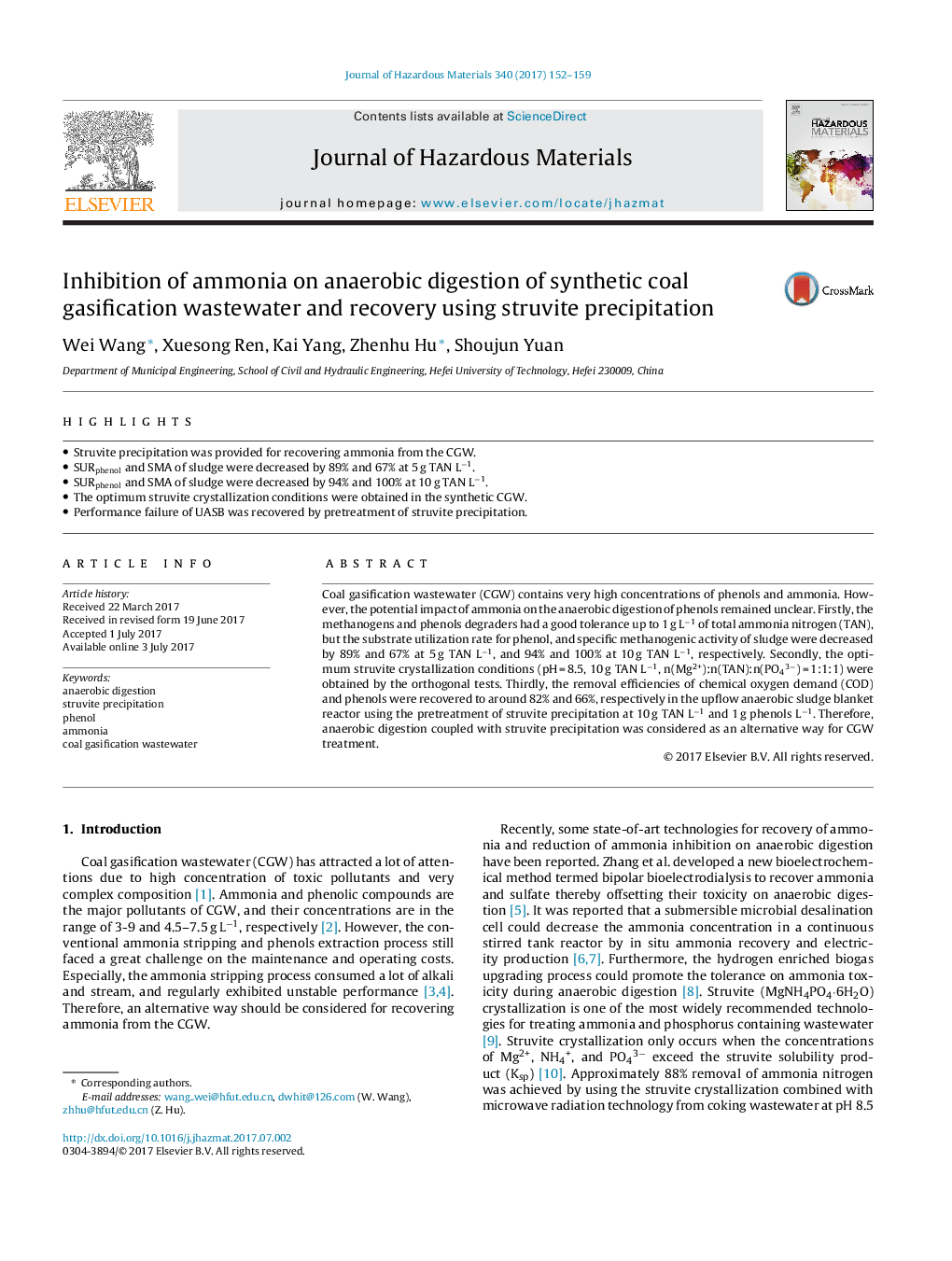| Article ID | Journal | Published Year | Pages | File Type |
|---|---|---|---|---|
| 4979203 | Journal of Hazardous Materials | 2017 | 8 Pages |
Abstract
Coal gasification wastewater (CGW) contains very high concentrations of phenols and ammonia. However, the potential impact of ammonia on the anaerobic digestion of phenols remained unclear. Firstly, the methanogens and phenols degraders had a good tolerance up to 1 g Lâ1 of total ammonia nitrogen (TAN), but the substrate utilization rate for phenol, and specific methanogenic activity of sludge were decreased by 89% and 67% at 5 g TAN Lâ1, and 94% and 100% at 10 g TAN Lâ1, respectively. Secondly, the optimum struvite crystallization conditions (pH = 8.5, 10 g TAN Lâ1, n(Mg2+):n(TAN):n(PO43â) = 1:1:1) were obtained by the orthogonal tests. Thirdly, the removal efficiencies of chemical oxygen demand (COD) and phenols were recovered to around 82% and 66%, respectively in the upflow anaerobic sludge blanket reactor using the pretreatment of struvite precipitation at 10 g TAN Lâ1 and 1 g phenols Lâ1. Therefore, anaerobic digestion coupled with struvite precipitation was considered as an alternative way for CGW treatment.
Related Topics
Physical Sciences and Engineering
Chemical Engineering
Chemical Health and Safety
Authors
Wei Wang, Xuesong Ren, Kai Yang, Zhenhu Hu, Shoujun Yuan,
